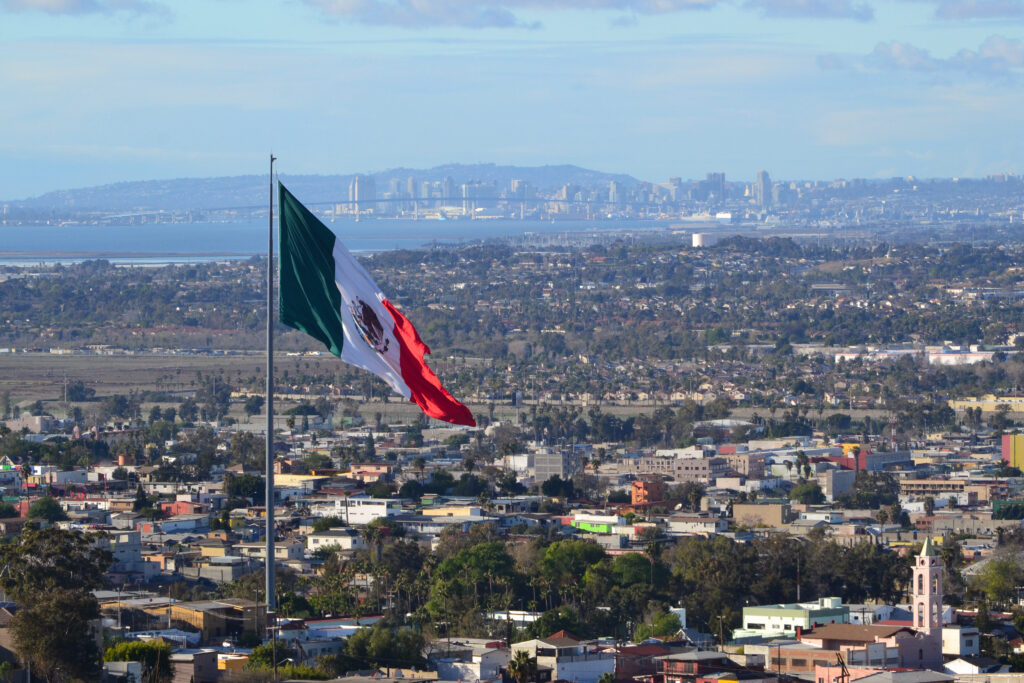How The Extended Border Closure Impacts San Diego Businesses

In March 2020, the U.S.-Mexico border closed to nonessential travel in response to the pandemic. Eighteen months later, it still remains closed—with no end in sight. Restrictions on nonessential travel have been extended monthly ever since.
The effects of the prolonged border closer on San Diego businesses are deleterious. Our region’s small businesses have lost nearly $650 million in sales and about 1,900 jobs as a result.
In a binational region like San Diego, safe and consistent movement across the border is critical to a diverse and thriving business community. Our mission at Business For Good is to help drive local policy that allows our region to flourish.
This Labor Day, BFG is taking a look at the border closure’s impact on local business and what actions we can take to help regain safe and consistent border travel in the San Diego-Tijuana mega-region.
Nonessential travel is available to those who have the resources
The COVID-19 pandemic no doubt warranted the closure of borders throughout the world to preserve global health and safety. And continuing to ban nonessential travel still makes sense in certain cases.
Some argue that one such instance is the U.S.-Mexico border. But in July, Baja California surpassed a 70% vaccination rate, enough to reach herd immunity, and nearly on par with San Diego County’s 77% vaccination rate. This huge milestone got people excited on both sides of the border that nonessential travel from Mexico into the U.S. would soon reopen.
And it did—for a small percentage of tourists who have the financial means to do so.
The U.S. reopened its border to nonessential travelers from Mexico who enter via air, rail, or sea. However, the border remains closed to tourists using land or ferry to cross.
“There is no explanation for why the nonessential crossing limitations apply to land and ferry, but not to other forms of travel,” said Rachel Lozano Castro, a Business For Good Board Member who lives in Tijuana and works in San Diego.
Because there is no clear mandate, the delineation seems arbitrary and irrational. It unequivocally divides opportunity by class due to the significant difference in expense between driving from Baja to San Diego and coming here by other means of travel.
San Diego Mayor Todd Gloria essentially made this same argument in a June press release, stating that he sees “no reason to continue selective restrictions that impact our cross-border community.”
The border closure impacts everyone in an interdependent region
These selective restrictions also perpetuate major uncertainty for border business owners, who live at the behest of last-minute restriction decisions by the Department of Homeland Security.
“DHS often extends the travel restrictions the day before the expiration date of the former limitations,” Rachel said. “This makes it virtually impossible for border business owners to plan to reopen, or for border residents to plan to cross and shop at those stores.”
Without question, the biggest impact on these businesses has been felt in terms of foot traffic and spending.
“People from Tijuana usually cross the border to buy essential goods, go shopping, or dine out,” Rachel said. “Many restaurants and bars in San Diego have regular clients from Tijuana and they have lost that consistency big time. Businesses have seen a major reduction in foot traffic and purchases because these people haven’t been able to cross for almost a year and a half.”
And the nonessential travelers who do have the financial means to fly into California for a shopping trip are not typically coming to patronize the mom-and-pop border businesses that are in crisis.
Gustavo de La Fuente, Executive Director of The Smart Border Coalition, described our region as a very unique, closely knit, and highly interdependent area. Halting nonessential travel by land and by ferry, which make up a big percentage of tourist travel at the San Diego border, comes with a long list of socio-economic consequences.
“We are a large, economically interdependent urban area straddling the border, unlike most of the U.S.-Canada border area,” Gustavo said. “Tens of thousands of people who live in or frequently visit Tijuana are employed in many service and manufacturing industries in San Diego. Thousands of expats live in the Tijuana metropolitan area and Ensenada. These are just two aspects of the numerous dimensions of our integrated communities.”
Impacts on small business investment and our region’s entrepreneurs
One of our core policy action areas at Business For Good is small business investment.
Small businesses, especially those with underrepresented ownership, often lack access to the capital they need to invest in themselves and grow.
This can drive business owners into immense debt from high-interest or predatory loans, putting small business entrepreneurs at significant risk for property foreclosure, bankruptcy, and loan default. All of this hurts not only the businesses but also entire communities in myriad ways.
The pandemic exacerbated these problems for businesses that managed to survive shuttering their doors, especially in communities of color, whose residents and businesses were disproportionately impacted by COVID-19.
Micro, small, and social businesses in Tijuana have been negatively impacted in three key ways:
- Decreased access to capital—According to bi-national San Diego tech entrepreneur Jorge Barba, the lack of regular access to U.S. capital and startup communities has greatly affected entrepreneurs in Tijuana. “They’ve had to adapt and leverage additional digital tools just to keep in touch with startup communities and investors in the U.S.,” he said.
- Disrupted entrepreneurial training—“Although this kind of training mostly continued online during the pandemic, informal surveys from the SBDC network show that a lot of the Spanish-delivered workshops are not well-attended online,” Rachel said. “Attrition is much higher than pre-pandemic in-person sessions. Also, the digital divide continues to be a major equity hurdle. For many people, it’s not as simple as ‘just moving everything online.’”
- Disconnected from other business owners/founders—Prior to the pandemic, the Small Business Development Center at the University of San Diego—where Rachel serves as Director—used to run regular “meetups” to connect talent with companies. “One group that did this a lot in a bi-national capacity was Frontera Founders,” Rachel said. “It is still done to some degree online, but most of these bi-national mixers have been put on hold.”
Once border restrictions are lifted, it’s clear there will be a lot of work to do in terms of helping our community’s businesses get back on track. To be effective, this will need to be a united effort that comes from all sectors—for-profit, nonprofit, and government.
What can we do to help the border fully reopen to nonessential travel?
The border closure obviously falls under federal jurisdiction. But what, if anything, can San Diegans do to help influence policy to reopen the border with appropriate safety measures in place for the San Diego-Tijuana mega-region?
“It is frustrating that we don’t have any control at the local or state level in terms of reopening our border,” Rachel said. “But I believe what we can do as residents is help other citizens, policymakers, and the media at large truly understand that San Diego-Tijuana is a completely interdependent region in every way. It’s entirely different from any other in the world. And prolonged closures like this hurt families, our integrated medical and public health systems, and our economy.”
There are thousands of others who agree and are working diligently to push DHS to clarify and make uniform the disparate nonessential travel restrictions into the U.S from Mexico.
“The [Smart Border Coalition] becomes distraught every month upon hearing that nonessential travel restrictions are being renewed for public health reasons,” Gustavo said. “We have inquired about the criteria for lifting such restrictions but have never obtained clear answers. Furthermore, we do not believe there was ever a well-conceived policy for the restrictions nor a logical process for lifting them.”
Rachel also cautioned that extended closures into 2022 are possible, mainly due to a conflict with vaccine authorization between Mexico and the U.S.
“Some of the vaccines administered in Mexico (i.e., CanSino) are not authorized by the FDA, even for emergency use,” she said. “This could pose a problem should proof of vaccination become a requirement for nonessential land and ferry travel from Mexico.”
Want to learn more about the extended border closure and cross-border stories that connect us? Check out KPBS’s “Port of Entry” podcast or visit the Smart Border Coalition for info on border advocacy.
